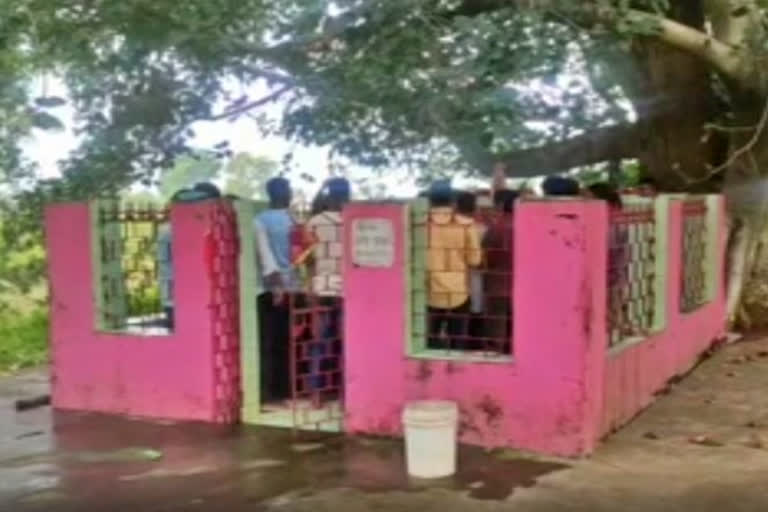Bokaro (Jharkhand): Know Mount Athos (Agion Oros) in Greece –a conglomeration of 20 monasteries that is universally acknowledged for disallowing women not only into the abbeys but indeed anywhere on the mountain itself. The pristine beauty of the mountain with its architectural wonder is only allowed for 100 Orthodox and 10 non-Orthodox male pilgrims- a rule which has been strictly adhered to since the fourth century, when the first monastery was constructed on this craggy peninsula.
Mangal Chandi temple like its Grecian counterpart might not be universally known for its exclusive rule but this abode to goddess Chandi situated at nondescript Purni Baghiyari village in Kasmar block, 40 km from Bokaro headquarters draws parallel with six other temples across the world where the entry of women is prohibited into the temple premises.
However, quite ironically for a place intended to honour the goddess Kali (Chandi), one of the fiercest female deities in the Hindu religion, there aren’t many women to be found amongst the hordes of devotees. As women are not allowed within 100 feet of the temple, their offerings are carried by their male companions to a stone – supposed to symbolise the fierce incarnation of the goddess Durga – from a certain point on its premises.
Though the exact reason behind barring the women from entering into the shrine is obscure but people believe that it is a process to prevent calamity from befalling the women worshippers. According to locals, one woman entered the temple several years ago and lost her mental balance.
Though no one was able to say for sure from when this practise came into force but according to the priest of the temple, the tradition of barring women to enter the temple has been going on for many decades now. Women, too, not objecting to the rule and they believe that even by worshipping from a distance, all their wishes are being fulfilled.
Also read: Devotees worship goddess Kushmanda on fourth day of Navratri
“The deity wishes to stay outside in an open space and so there is no temple constructed. We don’t know from when this practise is going on but we follow it religiously. She is very powerful and so the male worshippers only go inside. The females stay 100 metres away from the temple premise,” the priest Vivek Kumar said.
“Though there is restriction imposed on women, they are not averse to gathering at the stipulated spot for offering prayers to the deity,” a local resident Gopal Jha said.
However, the restriction does not affect the footfall of women devotees in the temple. They come in hundreds and stand at a far allowing the male members to pray to God on their behalf. This temple is said to fulfil everyone's wishes. Every Tuesday, people come to offer prayers in this temple. Even the offerings from the sacrifice are given only to men.
“I visit the temple regularly and worship from afar but have never entered the temple premises. There is mark beyond which I cannot go. This is a practise that has been continuing for years and I know that even if I pray to Gad from far she will listen to prayer and fulfil my wishes,” a female devotee – Neelam jaiswal told Etv Bharat.
Mangal Chandi temple is one of the very few temples where females are not allowed to enter. This is also a practice similar to the Lord Ayappa temple at Sabrimala in the Western Ghats where women between 12 and 50 years are not allowed to enter and this is mainly because the deity is celibate.
Similarly, Kartikeya Temple in Pehowa township of the North Indian state of Haryana is an ancient structure dating back to the 5th century where women are banned from entering the temple following the myth that the Lord curses women who enter the temple instead of blessing them. Okinoshima Island and Mount Omine in Japan also follow the same practise.



